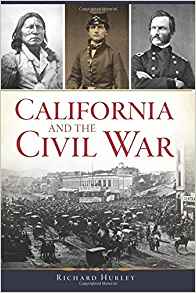The Ordeal of the Reunion: A New History of Reconstruction by Mark Wahlgren Summers. University of North Carolina Press, 2014. Cloth, IBSN: 978-1469617572. $40.00.
 Reconstruction is the unwanted orphan of the Civil War. And no wonder. The years that stretch from 1865 until 1877 are messy (there’s not even agreement about 1865 and 1877 as the beginning and finish dates), corrupt (think of Boss Tweed in New York and Franklin Moses in South Carolina), teeming with racial violence (massacres and riots in New Orleans, Memphis, Colfax, and Hamburg) and utterly lacking in the sort of heroics and battle scenes which make the Civil War such a consuming passion. Especially among historians of a Marxist bent (from James Allen to Eric Foner), Reconstruction is seen as a missed chance – an “unfinished revolution” – to put Americans on the road to an egalitarian and socialist future. Books on Reconstruction generally fall well short of the prominence awarded those on the Civil War, and no one has ever volunteered to be a Reconstruction re-enactor (given the emergence of the Ku Klux Klan during Reconstruction, one shudders at the possibilities).
Reconstruction is the unwanted orphan of the Civil War. And no wonder. The years that stretch from 1865 until 1877 are messy (there’s not even agreement about 1865 and 1877 as the beginning and finish dates), corrupt (think of Boss Tweed in New York and Franklin Moses in South Carolina), teeming with racial violence (massacres and riots in New Orleans, Memphis, Colfax, and Hamburg) and utterly lacking in the sort of heroics and battle scenes which make the Civil War such a consuming passion. Especially among historians of a Marxist bent (from James Allen to Eric Foner), Reconstruction is seen as a missed chance – an “unfinished revolution” – to put Americans on the road to an egalitarian and socialist future. Books on Reconstruction generally fall well short of the prominence awarded those on the Civil War, and no one has ever volunteered to be a Reconstruction re-enactor (given the emergence of the Ku Klux Klan during Reconstruction, one shudders at the possibilities).
Still, the sesquicentennial of Reconstruction is almost upon us, and discussions of disunion are going to yield ineluctably to discussions of reunion. And as they do, we can be grateful that the leading edge of these discussions is being carried by a book like Mark W. Summers’ The Ordeal of the Reunion.
Reconstruction is generally an occasion for historical hand wringing, whether for having done too little (Foner) or too much (the so-called ‘Dunning’ school of turn-of-the-century Progressives, who viewed Reconstruction as the apex of inefficiency in American democracy). Summers begins with a reminder of what Reconstruction really did accomplish. Bear in mind that no handbook as yet existed for how to “reconstruct” a federal union after a civil war. In most civil conflicts, the losers (as in the Vendee in 1793-96) were either exterminated, or produced an insurgency that compelled the victors to grant de facto independence (as in the Austro-Hungarian dual monarchy). Nevertheless, the victorious Union managed to achieve reunion on precisely the same Constitutional terms as had existed before the war, and with no renewed outbreak of formal hostilities. No rebel states were reduced to conquered provinces. No famine ravaged the defeated South. A dramatic military demobilization was conducted and the former soldiers absorbed peacefully back into the population. And the western territories (which had been the original bone of contention) were seamlessly integrated into a national free-labor economy. Given the possibilities within each of these developments for major political breakdown, Reconstruction begins not to look so awful as it might have been.
Summers is not blind to Reconstruction’s failures, but he is kinder to them than the Marxists without lapsing into the fevered distaste of the Dunning school. He is gentler with Andrew Johnson (at least in the opening months of his presidency, when Johnson was still willing to press Southerners for black voting rights) than most of Johnson’s biographers, and he sees many of the problems of Reconstruction as stemming unavoidably from the failures of Southern Unionists to take up the work of reunion with any competency. (Much of Johnson’s pardon strategy, which seems to us so incomprehensibly suicidal, was based on the need to fill vacant public offices in the South with people who had some measure of authority and experience). No one understood quite how to deal with ex-Confederate insurgencies like the KKK (in fact, the U.S. military hasn’t done so very well on that point in recent memory, either), and so the pressure to refranchise the Confederate leadership led, not to stability, but to clandestine resistance. We faced the same Hobson’s choice not long ago in Iraq: ban the Baathists from leadership but see the country slide into chaos, or end up restoring to power most of the people we loathed. We chose the first, and the result wasn’t exactly redeeming.
Summers also has a wide eye for context. If we want to see what a conquered-provinces approach to Reconstruction might have looked like, we have but to turn our gaze westward, where “the government really did treat the peoples it vanquished as if their lands were conquered provinces” and where “their original inhabitants were denied the vote, their lands were subject to confiscation, their villages sacked and burned” (179). Treating the Southerners like the Sioux (or, in a Marxist bent, like Stalin treated Ukraine) might not have provided a result we would have been prouder of. And he is reluctant to blame the eventual collapse of the Reconstruction regimes in the South purely on Northern white indifference. The North was never a solid political unit, even during the war, and the crack of doom for Reconstruction really began in 1874 with the return of a Democratic majority in the House of Representatives, a majority which made it clear that it would pay for no more federal meddling in the affairs of Southern Democrats. It did not help, either, that by 1874, a series of national scandals (starting at the top with Credit Mobilier) and the brutal economic panic of 1873 created a general sense of revulsion at Reconstruction regimes as “a sorry lot, hardly worth defending” (258). Politics and the economy, fully as much as racial disengagement, spelled the end of Reconstruction “and, however unjustly, the whole experiment in black suffrage would get the blame for misbehavior” (296).
But Summers also shares some of the defects of other Reconstruction histories, too: the principal one being focus. Reconstruction happened in a multitude of places, and one of the chronic problems in Reconstruction history has been to decide where the important plays are being made. The tendency has been to shift gaze uncertainly from Congress to the state houses to the sharecroppers to the KKK without imparting much sense of order to the sprawl of events and personalities. We still await an effective periodization of Reconstruction. Likewise, Summers offers few clues to the mystery of Ulysses Grant, and why such an effective a military leader turned out to be such an ineffective a Reconstruction president – although, to confound the problem still further, there are yet others who insist that Grant was in fact a very effective Reconstruction president. Summers also fails to provide a coherent approach to quantification: we get bursts of numbers about voting, cotton production, railroad mileage, but little in the way which links them into a useful overall picture. How many votes were cast in what elections? How many soldiers were posted in the South on a year-by-year basis? And I cannot entirely discount my annoyance with Summers’ stylistic quirkiness, his puns (the title of the book is an all-too-obvious play on Allan Nevins’ The Ordeal of the Union), and his snarky asides (e.g. “Extremism in the pursuit of white southerners’ liberty was no vice,” a confident swipe at Barry Goldwater’s 1964 nomination speech).
Yet, without stretching these complaints too far, Summers has produced a compelling and forcefully-drawn overview of Reconstruction. He is less interested than Heather Cox Richardson in the political economy of Reconstruction, even less interested in parsing the intricacies of race and reconciliation than David Blight, and substantially more convincing in his use of sources than Douglas Egerton. If The Ordeal of the Union does not quite tip Eric Foner’s Reconstruction from its quarter-century-old place on the pedestal of Reconstruction history, it will certainly give it more than a faint tremor.
Allen C. Guelzo, a three time winner of the Lincoln Prize, is the author of Gettysburg: The Last Invasion (2013).




